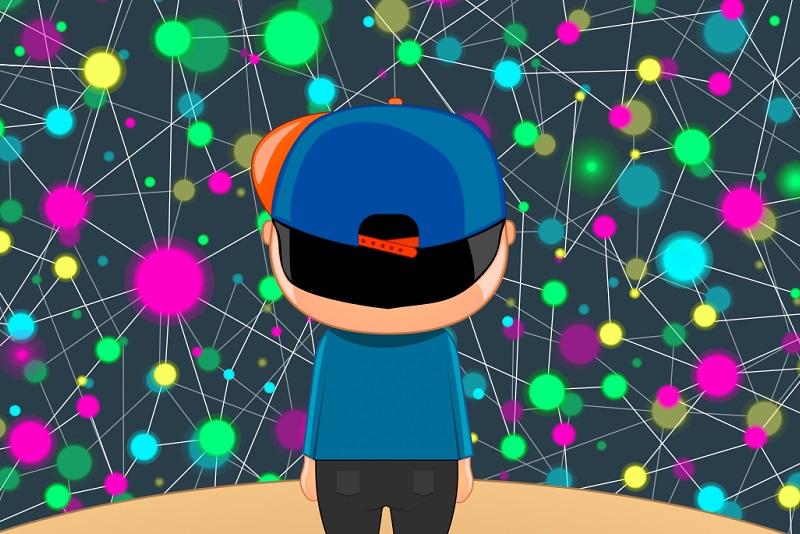Shaun the Sheep boards a plane to go skydiving. As he falls from the sky without so much as a parachute, his limbs flail wildly as he tries to avoid massive floating bales of hay. If Shaun hits just one, it’s game over.
It’s not the type of adventure the popular British character would normally embark upon, but this game wasn’t created by the professionals inside Bristol, England-based Aardman Animations. Instead, “Shaun the Sky Diving Sheep” was made by a fan using the coding program Scratch and published on the Shaun’s Game Academy website.
“Kids come up with such crazy ideas that adults generally never think of,” says George Rowe, a digital producer at Aardman. “We wanted them to be able to make and play each other’s games.” The studio launched Shaun’s Game Academy in May with an aim to teach children about coding and the process of making a game.
Children and web programming are now together at the forefront of early learning. Scratch and Tynker are two of the several web-based tools available to teach kids how to code. The recent Kickstarter campaign for ScratchJr, a programming language designed for five- to seven-year-olds, more than tripled its US$25,000 fundraising target. Children can also learn via iPad apps like Daisy the Dinosaur and Hopscotch. With new jobs opening up in tech circles, no parent wants their child to fall behind the curve. Neither do governments.
Earlier this year, the UK announced a £500,000 investment to train teachers in software coding as part of a push to get coding into this September’s school curriculum for kids as young as five. Also in Britain, Year of Code is an independent, nonprofit project to get people across the country coding for the first time in 2014. In the US, everyone from sports legends to Hollywood actors—and even President Obama—joined their voices for the Hour of Code campaign to push kids and adults alike into computer science. Think these two countries are ahead of the game? Estonia already has school programs that teach first graders computer programming.
What’s often missing, however, is an area for those young children to be further engaged beyond the classroom. “There isn’t that community hub where kids who are interested in coding can find out about things,” Rowe says.
In Ireland, Harry McCann was 12 when he first walked into the CoderDojo, a volunteer-led movement teaching kids around the world how to code. He looked around the room and saw most of his fellow students were younger than him. Regardless, everybody was helping each other out. “Age was really only a number,” he says. “A seven-year-old could be showing a 14-year-old what to do.”
Within months, McCann was a volunteer, but he eventually saw a need for those who graduated past the basics of the CoderDojo. To build off that foundation, he started Kid Tech, which offers 10-week courses. “I wanted to offer every child the opportunity to become an app developer or a game designer,” the 15-year-old founder and CEO of Kid Tech says. “Some of the youngest app developers are 11 or 12.”
Of the products he’s seen produced through his courses, one app allows users to take pictures of all their clothes and virtually dress a doll to see which outfit looks best. “Kids don’t struggle to find ideas,” McCann says. “They just struggle to find ways to build them.”
Ten years ago, Sanna Nilsson was like many teenagers on social media today. Only before Facebook was rampant in her native Sweden, her friends used the internet community site Playahead. “The way the profile worked was you could personalize them using HTML,” the 25-year-old says. Nilsson says it became competitive to keep a page updated and cool, even checking out blogs dedicated to coding snippets for Playahead. “I don’t think people knew they were coding,” she adds. “You were just so focused on getting your text pink and your music playing when someone entered your profile.”
Last year at the Hyper Island digital media school in Stockholm, Sweden, Nilsson and two of her female classmates talked about how they wished they were introduced to coding earlier in life. In a three-week school module, they invented the character Cody Coder (pictured above) for an eBook aimed at children aged five to 10. It was called My First Website – Cody Coder’s guide to HTML.
News of their goal to get young children into web programming received media attention, from Business Insider to the Washington Post. The Swedish trio founded Codarica, added a female character to their storytelling (Holly Hacker) and moved to L.A. two weeks ago to take part in the Disney Accelerator 15-week mentorship program for tech start-ups. Their goal is to use storytelling to convey a full programming language, such as HTML, and build a brand kids can identify with to stay engaged with web programming. “There are lots of communities for developers who are adults, but not for kids,” says Nilsson, Codarica CEO. “We hope that we can be that portal.”
This fall, Codarica will release its first app game Codequest: Website Adventures, where kids will learn to make a website firsthand. Nilsson talks about a future brand that features TV shows, merchandise and an augmented reality app.
“What people haven’t understood yet is that coding is 21st century literacy,” Nilsson says. “The future storytellers really are coders.”





















